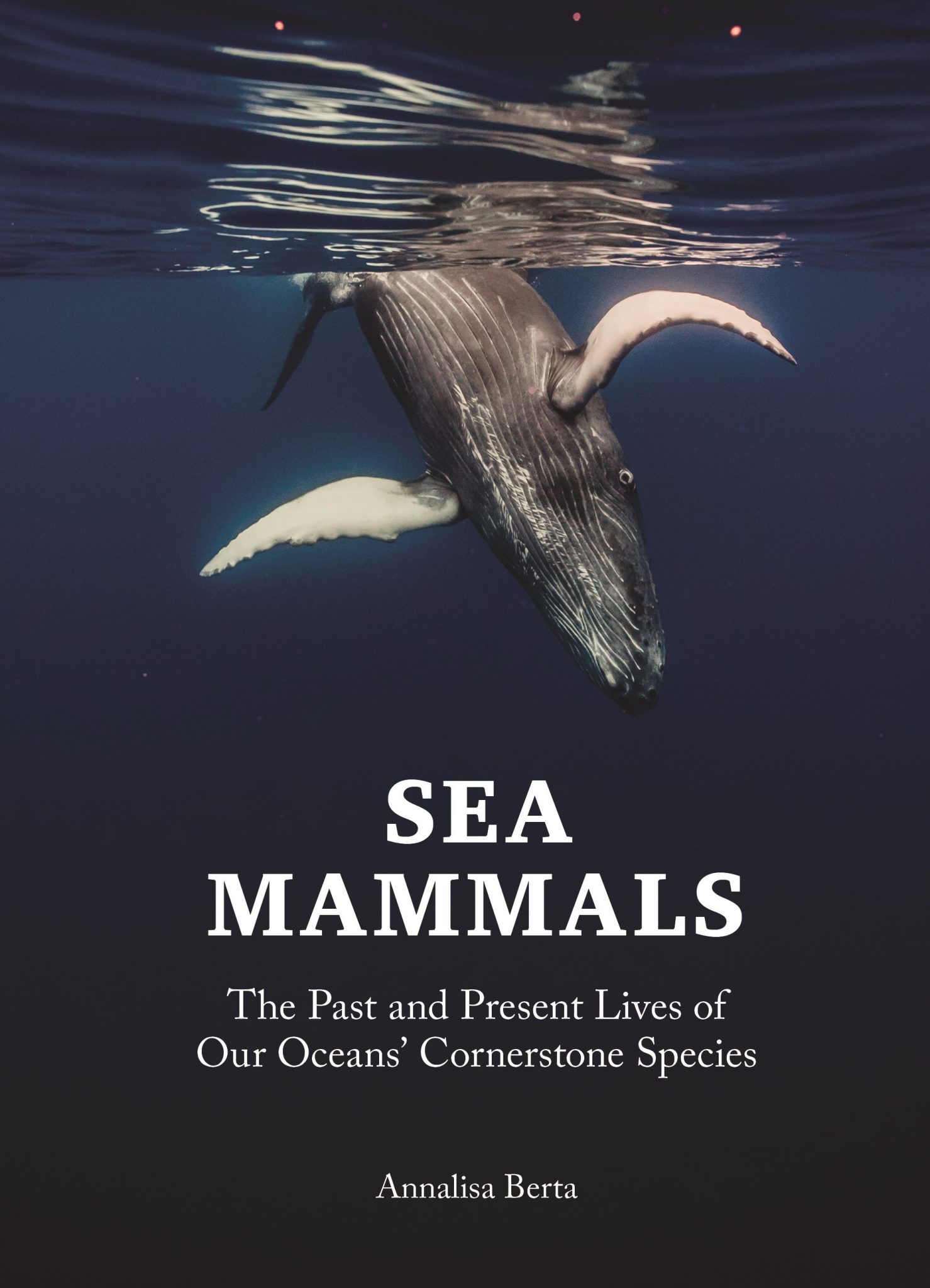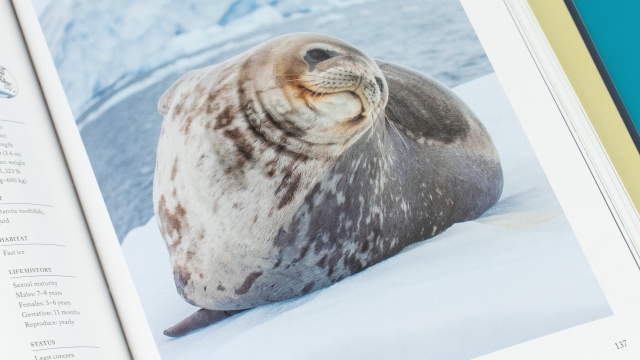Marine Life & Conservation
Book Review: Sea Mammals

Sea Mammals: The Past and Present Lives of Our Oceans’ Cornerstone Species by Annalisa Berta
This is a book packed with information about some of the most iconic and charismatic marine species. I have a particular soft spot for the pinnipeds, seals and sea lions, due to some incredible diving encounters over the years. So these were the pages I first turned to.
Once picked up this book is hard to put down. Polar Bears, Narwhal, Sea Otters, manatees, whales and dolphins adorn the pages with beautiful photographs and illustrations. Each turn of the page lures you in to discover more about a species you love, one you want to learn more about, some you have never heard of and even includes the details of fascinating animals that are sadly now extinct.
I think what I love most about this book is how it is organised. Rather than simply lump the animals into taxonomic groupings, they are put into chapters that tell you a story about them. Whether it is the story of their evolution, how they were discovered, their biology, behaviour or need for conservation. Once you have decided on an animal to delve deeper into, each species has its own story, as well as key information about size, diet, distribution, habitat and conservation status.
There is plenty to enjoy in this delightful book. Plenty to learn too. As the cold dark nights draw in, I can see myself delving into this book time and time again. This is a perfect gift for anyone that loves the ocean and its inhabitants. Or just treat yourself.
What the publisher says:
From the gregarious sea otter and playful dolphins to the sociable narwhal and iconic polar bear, sea mammals are a large, diverse, and increasingly precious group. In this book, Annalisa Berta, a leading expert on sea mammals and their evolution, presents an engaging and richly illustrated introduction to past and present species of these remarkable creatures, from the blue whale and the northern fur seal to the extinct giant sperm whale, aquatic sloth, and walking sea cow.
The book features more than 50 individual species profiles, themed chapters, stunning photographs, and specially commissioned paleo-illustrations of extinct species. It presents detailed accounts of these mammals’ evolutionary path, anatomy, behavior, habitats, and conservation. And because these are key species that complete many food chains and have the widest influence of all sea life, the book also offers insights into a broad variety of marine worlds today and in the future.
About the Author:
Annalisa Berta is professor emerita of biology at San Diego State University. A specialist in the anatomy and evolutionary biology of marine mammals, especially baleen whales, she formally described a skeleton of the early pinniped Enaliarctos. She is the author of Return to the Sea: The Life and Evolutionary Times of Marine Mammals and the editor of the award-winning Whales, Dolphins, and Porpoises: A Natural History and Species Guide.
Book Details
Publisher: Princeton University Press
Hardcover
Price: £25
ISBN: 9780691236643
Published: 26th September, 2023
Pages: 224
Blogs
Invitation from The Ocean Cleanup for San Francisco port call

6 years ago, The Ocean Cleanup set sail for the Great Pacific Garbage Patch with one goal: to develop the technology to be able to relegate the patch to the history books. On 6 September 2024, The Ocean Cleanup fleet returns to San Francisco bringing with it System 03 to announce the next phase of the cleanup of the Great Pacific Garbage Patch and to offer you a chance to view our cleanup system up-close and personal.
We look forward to seeing you there.
To confirm your presence, please RSVP to press@theoceancleanup.com
PROGRAM
Join The Ocean Cleanup as our two iconic ships and the extraction System 03 return to San Francisco, 6 years and over 100 extractions after we set sail, to create and validate the technology needed to rid the oceans of plastic.
Our founder and CEO, Boyan Slat, will announce the next steps for the cleanup of the Great Pacific Garbage Patch. Giving you a chance to view our cleanup system and the plastic extracted.
Hear important news on what’s next in the mission of The Ocean Cleanup as it seeks to make its mission of ridding the world’s oceans of plastic an achievable and realistic goal.
Interviews and vessel tours are available on request.
PRACTICALITIES
Date: September 6, 2024
Press conference: 12 pm (noon)
Location: The Exploratorium (Google Maps)
Pier 15 (Embarcadero at Green Street), San Francisco, CA
Parking: Visit The Exploratorium’s website for details.
RSVP: press@theoceancleanup.com
Video & photo material from several viewing spots around the bay
We look forward to seeing you there!
ABOUT THE OCEAN CLEANUP
The Ocean Cleanup is an international non-profit that develops and scales technologies to rid the world’s oceans of plastic. They aim to achieve this goal through a dual strategy: intercepting in rivers to stop the flow and cleaning up what has already accumulated in the ocean. For the latter, The Ocean Cleanup develops and deploys large-scale systems to efficiently concentrate the plastic for periodic removal. This plastic is tracked and traced to certify claims of origin when recycling it into new products. To curb the tide via rivers, The Ocean Cleanup has developed Interceptor™ Solutions to halt and extract riverine plastic before it reaches the ocean. As of June 2024, the non-profit has collected over 12 million kilograms (26.4 million pounds) of plastic from aquatic ecosystems around the world. Founded in 2013 by Boyan Slat, The Ocean Cleanup now employs a broadly multi-disciplined team of approximately 140. The foundation is headquartered in Rotterdam, the Netherlands, and opened its first regional office in Kuala Lumpur, Malaysia, in 2023.
Find out more about The Ocean Cleanup at www.theoceancleanup.com.
Marine Life & Conservation
SHARK MONTH ARRIVES AT ROYAL WILLIAM YARD, PLYMOUTH

A shark has been spotted approaching Royal William Yard in Plymouth, much to the surprise of swimmers, paddleboarders and onlookers.
With its distinctive dorsal fin cutting through the water, the sizeable shark swam along the coastline, before turning to head inland towards Firestone Arch at Royal William Yard. The appearance drew a crowd, who were captivated for more than an hour by the unusual sight – and it was all caught on video.
The shark is one of many expected sightings at Royal William Yard over the coming weeks… because today marks the start of Shark Month!
In reality, the ‘shark’ spotted along the Plymouth shoreline was actually a custom-made model, created by the team at Royal William Yard and sailed underwater by Caroline Robertson‑Brown from the Shark Trust, who donned scuba diving gear for the occasion.
The stunt took place to launch Shark Month in style and draw attention to the work of the leading international conservation charity, which is based in Britain’s Ocean City. Spectators were reassured that the water was safe and many entered into the spirit of the performance, swimming or sailing alongside the shark.
Shark Month will take place across Royal William Yard throughout July and will feature an extravaganza of art, entertainment and advocacy for everyone to enjoy. The packed programme of events starts with an art exhibition and ends with a trip on paddleboards with shark experts – with everything from a shark quiz to a Jaws screening in between.
Paul Cox, CEO of the Shark Trust, said: “There are often assumptions and misconceptions when it comes to sharks. This was certainly the case with the shark spotted at Royal William Yard! While the British coastline is home to many species of shark, this was not one of them. However, we’re thrilled it caught people’s attention, because seeing a shark is a special and memorable moment. That is precisely why we want to celebrate these incredible creatures, highlight the need for conservation, and ask for help to safeguard their future.”
For more information about Shark Month at Royal William Yard, visit the Shark Trust Website.
Images and video: Jay Stone
-

 Blogs2 months ago
Blogs2 months agoDiving With… Nico, Ocean Earth Travels, Indonesia
-

 News1 month ago
News1 month agoMurex Bangka Announce New Oceanfront Cottages & Beachfront Dining
-

 Blogs2 months ago
Blogs2 months agoA new idea in freediving from RAID
-

 Marine Life & Conservation1 month ago
Marine Life & Conservation1 month agoIceland issue millionaire whale hunter a licence to murder 128 vulnerable fin whales
-

 Marine Life & Conservation2 months ago
Marine Life & Conservation2 months agoThe Shark Trust Great Shark Snapshot is back
-

 News3 months ago
News3 months agoCharting New Waters; NovoScuba Goes Global with the Launch of their Revolutionary Dive Training Agency!
-

 Gear News1 month ago
Gear News1 month agoNew Suunto Ocean – a dive computer and GPS sports watch in one for adventures below and above the surface
-

 Marine Life & Conservation Blogs2 months ago
Marine Life & Conservation Blogs2 months agoBook Review: Plankton

















